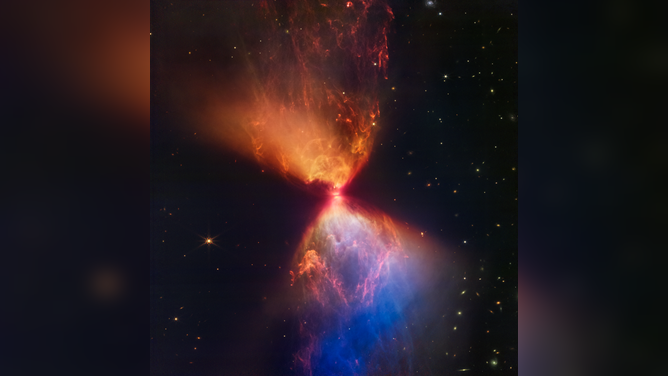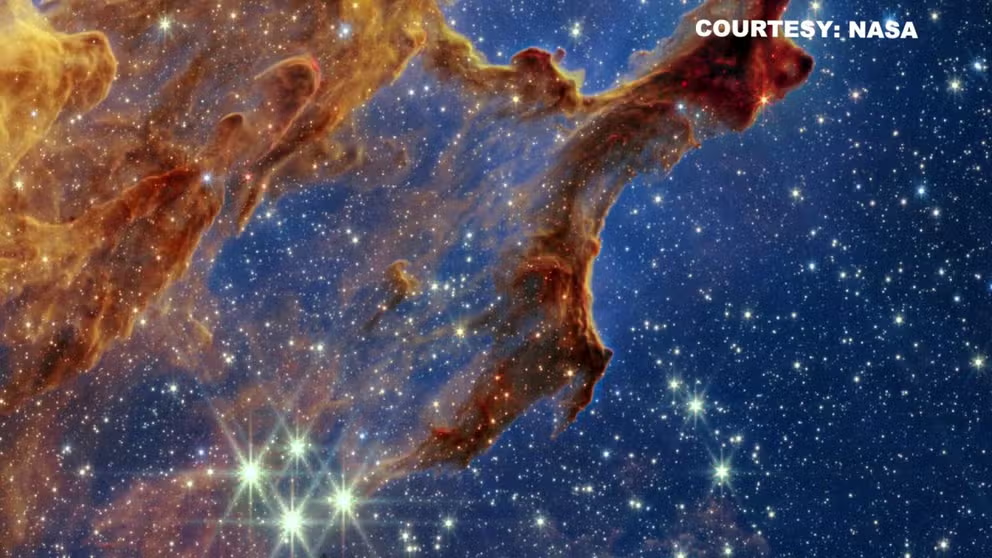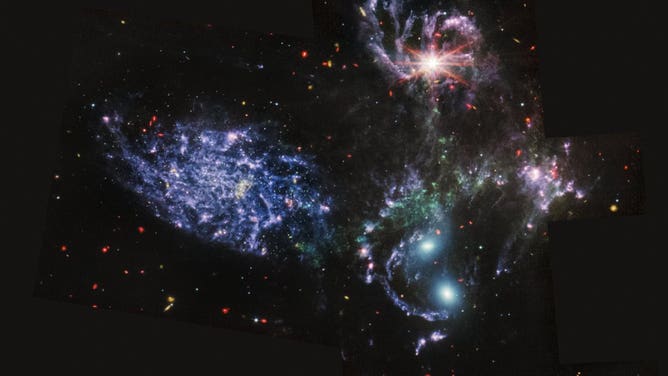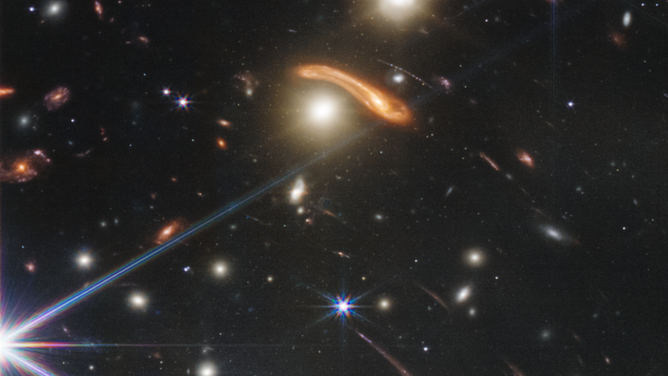James Webb telescope releases new image unveiling a new star form, displaying ‘fiery hourglass’
The new star, known as protostar L1527, is at the “neck” of the hourglass-shaped light. It is a window into what our solar system may have looked like before the sun and the planets took shape.
See the latest stunning images taken by the James Webb Space Telescope
The James Webb Space Telescope has released more mesmerizing images of the deepest corners of our universe.
The beginnings of a new star were captured by NASA’s James Webb Space Telescope, and like many other images from the JWST, it is just as mesmerizing.
Known as protostar L1527 IRS, the new star is located in a nebula of the constellation Taurus.
An image taken by the James Webb Space Telescope shows the protostar illuminating part of the nebula, with beams of light creating a bright, hourglass shape set upon the backdrop of dark clouds of dust and gas.
The top half of the "hourglass" reveals clouds of gas and dust in shades of orange and bronze, while clouds on the bottom half are awash in blues and lavenders.

The protostar within the dark cloud L1527, shown in this image from NASA’s James Webb Space Telescope Near-Infrared Camera (NIRCam), is embedded within a cloud of material feeding its growth.
(SCIENCE: NASA, ESA, CSA, STScI / IMAGE PROCESSING: Joseph DePasquale (STScI), Alyssa Pagan (STScI), Anton M. Koekemoer (STScI) / NASA)
Such a vibrant display of colors is due to the clouds only being visible in infrared light, allowing them to be captured by the Near-Infrared Camera (NIRCam) on the James Webb Space Telescope.
The image captured by JWST is a representative-color infrared image, meaning that the colors represent the density of the gas and dust clouds being illuminated – not the colors of the clouds themselves.
Video tour of Webb's Pillars of Creation
The James Webb Space Telescope provides a near-infrared light view of the Pillars of Creation.
Areas where cloud material is the thinnest, are shown in blue, while areas where they are thickest appear in orange.
At the "neck" of the colorful hourglass lies the protostar. While hidden from direct view in the image, signs of the protostar can be seen by the light being emitted above and below a dark line in the middle of the neck. It is this light that forms the illuminated "hourglass" in the nebula.
The dark line indicating the location of the protostar is a protoplanetary disk, or a dense region where the material is clumping together, which surrounds the protostar. From this material, planets may eventually form.
HOW TO WATCH FOX WEATHER ON TV
Protostar L1527 is relatively young at only about 100,000 years old – for comparison, our Sun is estimated to be 4.5 billion years old.
The protostar and protoplanetary disk encircling it is approximately the size of our solar system. It is a window into what our solar system may have looked like before the sun, and the planets took shape.
Incredible images from James Webb show the universe like never before
As the world's premier space science observatory, the James Webb Space Telescope is giving us glimpses into distant worlds like never before.






